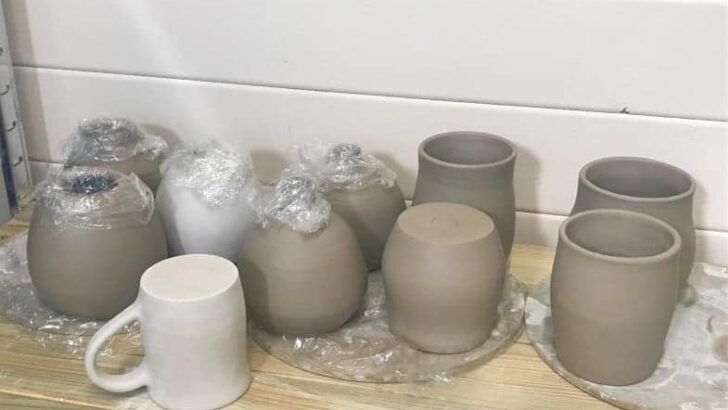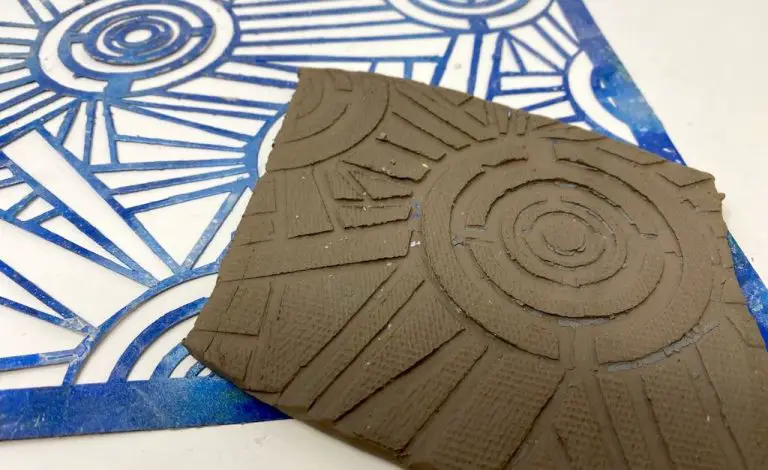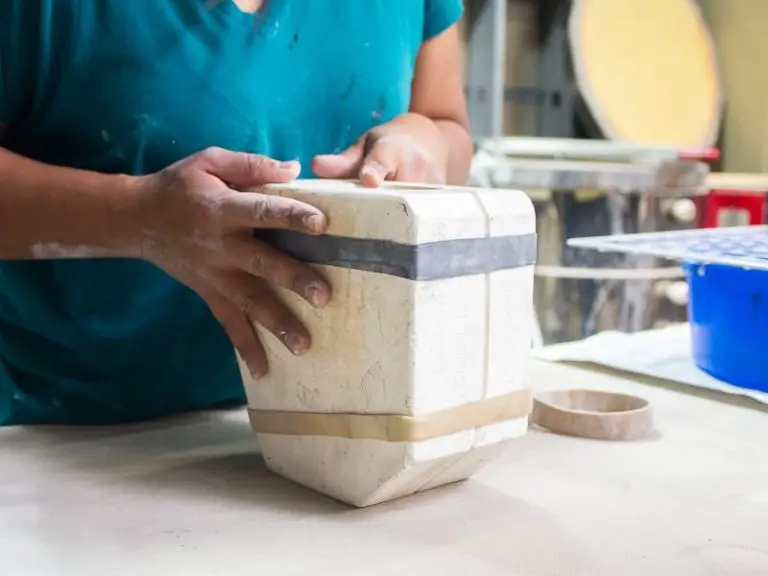What Can I Use As Clay Cutters?
Clay cutters are tools used to cut shapes and patterns out of blocks or sheets of clay. They come in a variety of shapes and materials and allow clay artists to easily produce consistent, uniform pieces. Clay cutters have many uses including making jewelry, decorative objects, clay buttons, charms, embellishments, and more.
When most people think of clay cutters, they picture the metal cutters that often come in sets with various shapes like stars, hearts, circles, etc. However, many common household items can also be improvised as DIY clay cutters. This allows clay artists to experiment with different shapes and textures at no additional cost. Materials like plastic, wood, rubber, and silicone can all be used, as well as repurposed items like bottle caps, cookie cutters, and jar lids.
In this article, we will explore the most common materials that can be used as improvised clay cutters and provide tips on how to utilize them effectively.
Metal Cutters
Metal is a popular material for clay cutters as it holds shape well and can easily cut through clay. Some common household metal objects that can be repurposed as clay cutters include:
Cookie Cutters
Cookie cutters make great clay cutters, as they are designed for cutting dough which has a similar texture to clay. Metal cookie cutters come in all sorts of fun shapes like animals, flowers, hearts, stars, and more. They are inexpensive and widely available.
Tin Can Lids
The circular lids from tin cans, especially larger sizes like coffee cans, make perfect circle cutters. Use tin snips to cut off the rim of the lid to create a smooth cutting edge.
Metal Bottle Caps
Wash and dry metal bottle caps from soda, beer, wine, or other bottles make tiny circular cutters.
Custom Metal Cutters
Many craft and baking supply stores sell blank metal cutters in simple shapes like circles, squares, hearts, and stars. These can be customized into more intricate designs using metal shears or files. Some people even make their own custom metal cutters from tin or aluminum sheets.
Plastic Cutters
Plastic offers an abundant, affordable and versatile material for DIY clay cutters. Many everyday plastic items around the home can be repurposed as clay cutters.
Plastic lids make for great circular clay cutters. Yogurt lids, milk jug lids, and lids from storage containers all work well. Make sure to clean and sanitize the lids before using them on clay. Measure the diameter of the lid if circular cutters of specific sizes are needed.
The bases of plastic storage containers, in particular rectangle or square ones, can be used as cutters for straight lines. Cut off the lower portion of a plastic container to create a square or rectangular cutter.
Old plastic utensils like knives, forks and spoons can be used as improvised clay cutters. Use the tip of a knife or edge of a fork to imprint lines and patterns. The bowl of a spoon can imprint curves and circles.
For more precise shapes, cut shapes out of thin acrylic sheets. Acrylic offers stiffness similar to metal while being lightweight and easy to cut. Use an acrylic cutter or jigsaw to cut custom acrylic shapes as clay cutters.
Wood Cutters
Wooden household items are a convenient and readily available option for making homemade clay cutters. For example, you can easily turn craft sticks, wooden spoons, popsicle sticks and wood slices into custom cutters and stamps.
Craft sticks (a.k.a. popsicle sticks) work great since they already come in a variety of sizes. You can use them lengthwise to create rectangular cutters or cut them widthwise with scissors for tiny square or circular shapes.
Wooden spoons usually have a bowl shape, so they make natural curved clay cutters. Make sure to sand the edges smooth. Popsicle sticks can also be sanded into points or curves for unique shapes.
Thin wood slices, available at craft stores, can be cut into circles, stars, hearts or any shape you desire. Use a scroll saw or jigsaw to intricately cut your own designs. Sandwich the wood slices between two old books while cutting to prevent splintering.
The benefits of wood cutters are that they are inexpensive, reusable and give a nice organic imprint to clay. Remember to seal them with mineral oil or beeswax to prevent staining from the clay.
Rubber Cutters
Rubber materials make excellent clay cutters because they are easy to cut into shapes and have a slight flexibility that allows for easy release of clay shapes. Here are some common rubber items that can be repurposed as clay cutters:
Jar Lids – The metal lids from jars and bottles of all sizes can be used as circular clay cutters. Remove the inner cardboard seal and use the rubber ring that grips the edge of the jar. Press the lid into the clay to cut out uniform circles.
Floor Tiles – Rubber floor tiles, often used for children’s play rooms, can be cut into different shapes and used for clay cutters. The thickness is ideal and provides stability when pressing into clay.
Rubber Stamps – Large rubber stamps meant for art projects or logo purposes can be used as clay cutters. The stamp design will imprint on the clay and create interesting patterns.
Erasers – Simple rubber erasers, especially large shapes like rectangle or circle ones, can be utilized to cut basic shapes out of clay.
Silicone Cutters
Silicone is a popular material for reusable clay cutters and molds. Silicone is flexible, durable, and easy to clean. Here are some common types of silicone clay cutters:
Reusable molds – These molds are made entirely of silicone and can be used over and over. They are available in simple shapes like circles and squares or detailed 3D molds like flowers and animals. Reusable silicone molds make it easy to duplicate clay shapes.
Baking molds – Silicone baking molds allow you to form clay pieces and then bake them directly in the mold. The clay will hold its shape while baking. Baking molds come in geometric shapes, pans, cups, and more.
Resin molds – These heavy duty silicone molds are made for casting resin pieces. Once cured, the resin can be popped out of the flexible mold. Resin molds often have very intricate designs.
Silicone putty – Self-hardening silicone putty can be molded into custom clay cutters or texture plates. Simply roll out the putty and cut into the desired shape. Once hardened, press clay into the silicone to achieve the imprinted design.
Found Objects
Everyday items found around the home can also be used as clay cutters. Coins are a classic example—their circular shape easily cuts round pieces out of clay. Pennies, nickels, dimes, quarters, and even foreign coins you have collected while traveling all work wonderfully. Just press them into the clay to cut out uniform circles.
Seashells also make lovely natural clay cutters. Their swirling shapes and ridges will imprint beautifully into clay. Leaves are another nice option since they come in so many shapes and sizes. Look for leaves with interesting veins or edge patterns. Press them gently into the clay, then remove the leaf to reveal the impression left behind.
Buttons, both vintage and new, are readily available to most crafters. Use their simple shapes like circles or flowers to easily cut shapes from clay. Wooden, plastic, or metal buttons work well. For more unique shapes, look for hollow plastic figures like small toys or cookie cutters. Press these into clay to make charming embossed designs.
Food Items
Fruit and vegetable peels can double as homemade clay cutters. Consider using:
- Orange peels
- Apple peels
- Pear skins
- Potato skins
- Zucchini or cucumber ends
The curved shape of fruits and veggies makes interesting shaped cutters. Wash thoroughly after each use.
Cookie cutters provide a huge variety of simple but fun shapes like stars, hearts, circles, etc. Metal and plastic cookie cutters work best as they keep their shape well when pressed into clay.
Uncooked pasta like rigatoni, rotini or farfalle can make novelty clay cutters. Press the pasta gently into the clay at an angle to get an imprint. Let the clay fully dry before removing the pasta cutter.
Paper Cutters
Paper and cardstock can make excellent reusable clay cutters. Items like index cards, cardboard, and cardstock can all be used. Here are some ideas for paper clay cutters:
Cardstock – Cardstock comes in various sizes and thicknesses, making it easy to cut customize shapes and sizes. Use scissors or a craft knife to cut cardstock into unique circles, squares, rectangles, hearts, stars, etc. The stiffness of cardstock allows for crisp cuts.
Index Cards – Both full size and mini index cards work well for cutting shapes in clay. Their small size makes them easy to hold while cutting the clay. Index cards are thin enough to cut intricate shapes but sturdy enough to reuse many times.
Paper Punches – Paper punches for scrapbooking or crafts are a quick and easy way to punch out uniform shapes from clay. Look for punches in fun shapes like flowers, circles, hearts, stars, and more.
Stencils – Any paper or plastic stencil can be used as a clay cutter. Place the stencil over the clay and use a craft knife or needle tool to trace around it, creating a cutout design.
Conclusion
There are a wide variety of materials that can be used to create custom clay cutters. Metal cutters like cookie cutters work well and provide clean cuts, while plastic cutters from old toys or packaging can be repurposed. Wood and rubber materials can be carved or etched to make shapes. Silicone is a great flexible material for molding custom clay cutters.
Some creative everyday objects like bottle caps, jar lids, and small food items like fruits can be pressed into clay to create patterns and shapes. For quick disposable clay cutters, paper and cardboard work nicely. When choosing materials for DIY clay cutters, opt for items that have some rigidity to hold their shape and cleanly cut the clay.
Making your own custom clay cutters allows you to create personalized designs not found in stores. Experiment with materials around your home and workshop to produce original clay cutter shapes. The possibilities are endless when you utilize metal, plastic, wood, rubber, silicone, paper, cardboard, caps, lids, and food items to make your own one-of-a-kind clay cutters.



